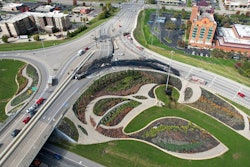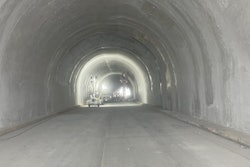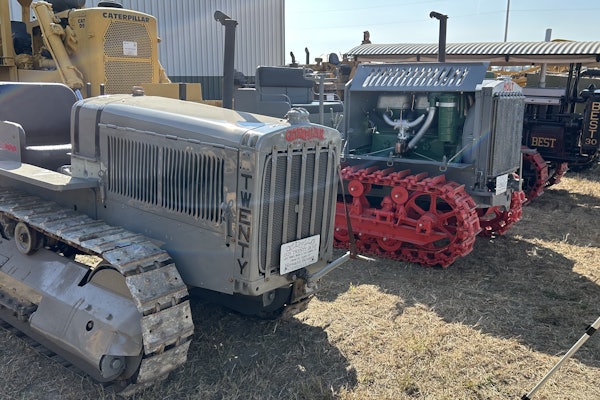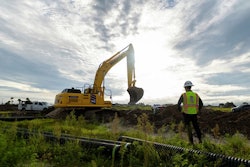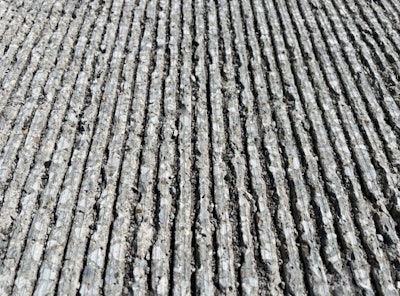
Indiana has a problem with prematurely deteriorating concrete on roads and bridges, and the state Department of Transportation and the American Cement Association are investigating whether a lower-carbon cement could be the cause.
INDOT has issued new limitations on the use of limestone-infused Type 1L cement. In response, ACA questions the technical justification for the new provision and fears it could restrict innovation.
Premature cracking, surface scaling and crumbling tines, originally documented in an October 20 report from WRTV of Indianapolis, are being found on projects finished between 2022 and 2025.
An internal INDOT memo October 16, 2024, shows the department has been aware of the issues. The memo from Gregory G. Pankow, chief engineer of construction (which can be found in its entirety here) reads:
This office has recently been made aware of durability concerns with concrete bridge decks, bridge deck overlays and bridge approaches placed in the last few years.
If you have placed any of the above this year and had flexural beam breaks that did not meet the contract strength requirements within 12 days, or have had excessive cracking, scaling, or loss of tines, then the Department does not want to accept contracts with these bridges, or approach slabs this year (2024).
Contractors need to be made aware of the issue and our decision to hold off on acceptance and to instead review the bridges and approach slabs in the spring/summer time frame of 2025.
A second internal memo from Pankow August 27, 2025, reiterated the ongoing durability concerns and gave the same directives outlined above.
INDOT also acknowledged the issue in a presentation at its 2025 Bridge Design Conference, showing pictures of the deteriorating concrete and estimating 15% of recent deck, overlay and reinforced concrete bridge approach pours could exhibit these issues. Ultimately, INDOT says, the long-term durability of those recent jobs may be compromised.
 Indiana DOT
Indiana DOT
In a statement to Equipment World, INDOT said it is still testing, inspecting and researching to find the cause of the durability issues, “some of which may be connected to Type 1L cement."
“The agency remains fully committed to working collaboratively with the cement, concrete and construction industries, researchers and standards organizations to identify root causes and evaluate potential solutions.”
Limestone Connection?
In the 2025 Bridge Design Conference presentation, INDOT said it had “observed issues over the past couple years, which coincides with the implementation of Type 1L cement.” Use of Type 1L cement in Indiana has gained popularity in the last few years, according to WRTV.
Infused with uncooked limestone at 5%-15% of the total cement content, producing Type 1L cement results in lower emissions compared to traditional Portland cement. However, its use is now being linked to finished concrete structures exhibiting low flexural strength.
As a result of these findings and ongoing concerns, INDOT revised certain standard specifications in September 2025 to limit the use of limestone in finished blended cement to 10% by mass of the blended cement.
Cement Group Questions INDOT Limits
In response to INDOT’s new limitations on the use of limestone-infused Type 1L cement, ACA issued a brief October 24, saying the new provision “lacks technical justification and may unnecessarily restrict material performance and innovation.”
ACA says the problems seen on recent Indiana projects do not line up with similar application in other states and that it wants a “collaborative approach with INDOT to address their concerns.” ACA also says these INDOT's limitations disregard specifications from the American Association of State Highway and Transportation Officials.
The ACA laid out several other considerations in a June 19, 2025, letter to INDOT, including that the entire concrete system – placement, finishing and curing – must be evaluated on these projects. That letter was co-signed by the American Concrete Pavement Association and the National Ready Mixed Concrete Association.
ACA says its current activities on this issue include the following:
- Collecting samples from INDOT-identified projects potentially affected.
- Initiating industry research to generate technical data on INDOT mixtures and construction practices, including petrographic analyses and laboratory testing.
- Requesting 2024 concrete bridge deck and approach projects field data to evaluate performance trends.
- Continuing to seek INDOT data supporting specification changes in their Construction Memoranda (21-05, 22-02, 23-01, 24-03, and 25-02) which permit the use of certain colloidal silica admixtures and modify the water–cementitious material ratios and curing practices.





